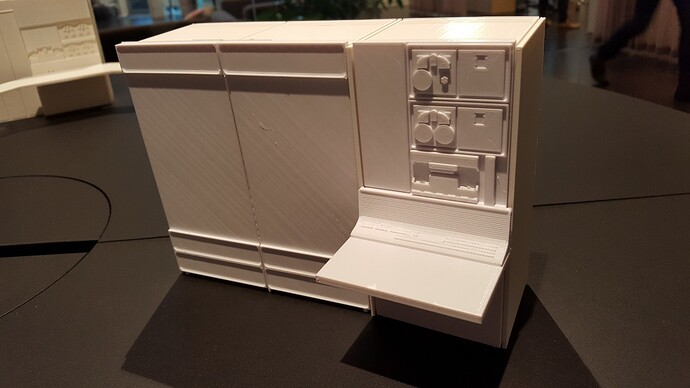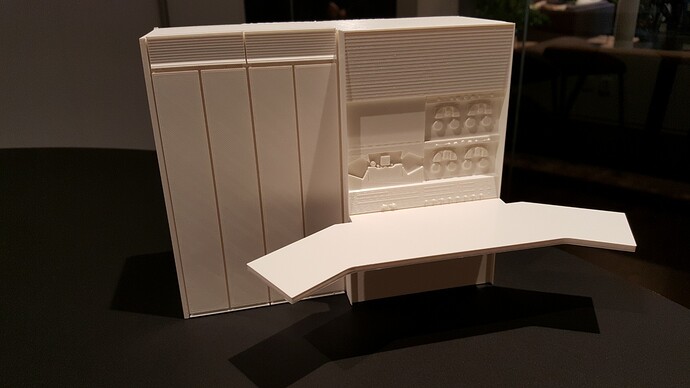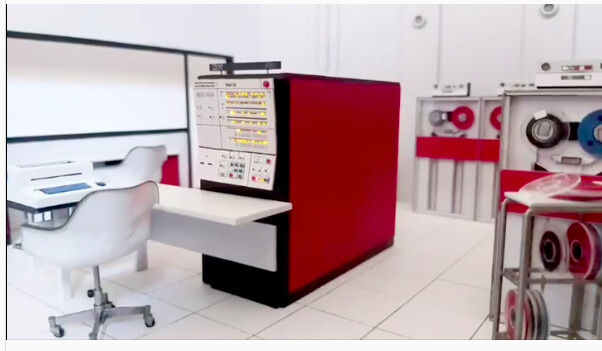OK, not retro, but anyone who’s worked with a raised-floor mainframe system will appreciate this. Siting of the Sierra Supercomputer - YouTube
Toying with the idea of 3D printing a mini raised floor for my mini PDP-6 and PDP-10 models.
… and fitting in a 64 bit arm micro controler for the blinking lights. ![]()
Do you picture of said models, and what scale?
Obligatory link: Miniature 1959 IBM 1401 Console handmade polystyrene scratch build!
See also: Miniatua Limited Edition | IBM 1401 (and the two 704s, as well!)
This one is pretty good too, and has blinking lights!
https://www.instagram.com/p/CPaYprFDBiM/c/17941354378475594/
Very nice! (I didn’t know this one.)
The other one (the unpainted samples) – is this your own doing?
no facebook,no app, no picture!
Oh, sorry I was unclear. Yes, the unpainted models are the ones I 3D printed. I just printed them, the models were made by other people.
Works perfectly fine for me in the browser (checked with Firefox, Chrome, and Safari). Could it be that you have a URL extension installed, but not the related app?
(There is no login required to view that page and you can dismiss the cookie pop-up by “only necessary cookies” – which is, of course, not that obvious.)
Looking at the PDP 6,did they really just use the paper tape reader
and micro-drives? All the other computer companies had banks
and banks of magetic tape drives for batch processing at that time.
Paper tape (commonly used to transfer programs) and DEC drives was the usual DEC way, as I understand it. There were larger tape units and even punch card readers, while those were not much advertised.
From Ken Olsen’s oral history (here related to the PDP-1):
DKA: Ken, was it all paper tape or did you have magnetic tape at all for the PDP-1?
KO: The software people brought to the machine with them was paper tape. There was magnetic tape for storage but people didn’t normally bring the [magnetic] tape with them. They usually brought the paper tape, or they’d bring a tray like this [DEMONSTRATING PAPER TAPE TRAY]
(…)
DKA: Ken, did you use card readers at all with the PDP-1?KO: In general, we used paper tape. The scientific users used paper tape. We always had a card reader available because commercial users or some people whose data came in punched card form did have to have access to punch cards. But the paper tape was much easier to use for the casual user.
Fun fact: From this oral history we also learn that it was really “Digital”, but they accepted that they were “DEC” for about half of the people. (The early logo however read “dec”.)
don’t forget to 3-d print the case of beer stored under the floor!
I’m also getting the “must sign into Instagram” login page.
Interesting, I’m seeing just a banner at the bottom with a tiny close box at the right (meaning, it doesn’t obcure or disable the content and it can be dismisssed without login). Maybe some A/B-testing? — That is, I’m on a notebook, it may behave differently on mobile devices.
I love consistent behavior so that we can share our experiences! (Apparently, parts of the industry not so much.)
Firefox 91.11.0esr (current for Debian 11) on a laptop, getting full blown login screen with no content (but the original link is shown as a redirect in the URL). Have you perchance used Facebook from that browser? I haven’t logged into FB for over 2 years, and never on this computer.
(edit: this occurs in private browser mode as well)
Well, there seem to be going something on, either A/B test related or by region. Sorry for my initial incredulity.
Might be caused by ad blockers, too – there are a number of sites that get really upset when you interfere with their ability to distract and irritate.


